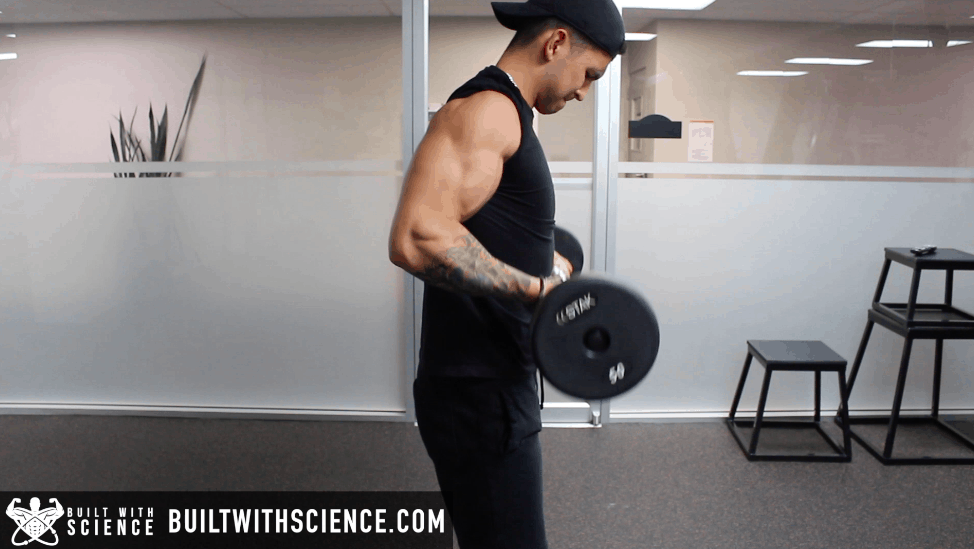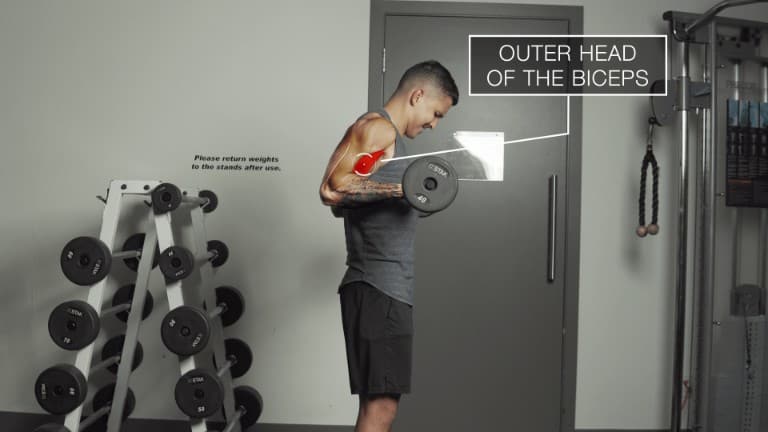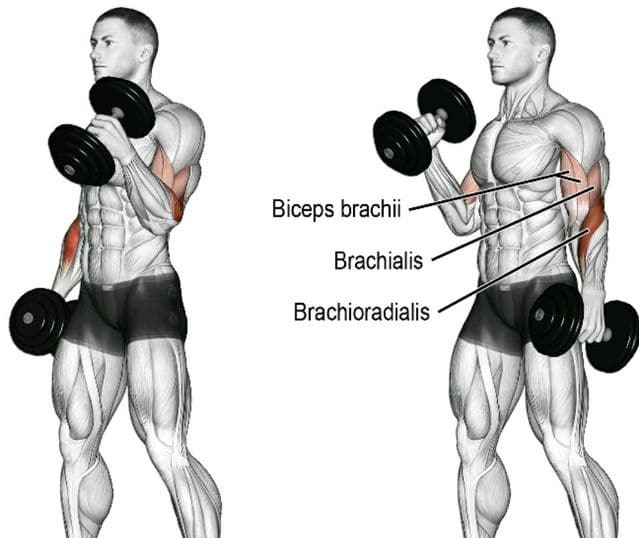

It is positioned deeper than the biceps brachii. The brachialis (brachialis anticus) is a muscle in the upper arm that flexes the elbow joint. It is also capable of both pronation and supination, depending on the position of the forearm. The brachioradialis is a muscle of the forearm that flexes the forearm at the elbow. The forearms are one of the secondary muscle groups used in this movement.

The biceps is used to lift the forearms and, of course, it’s one of the most famous muscles used for flexing and “strength” presentation. The primary muscle used in the the drag curl is the biceps (both the short and the long head). The drag curl will definitely spark new growth in the biceps and make arm workouts more exciting. This exercise is usually done using moderate to high reps (10-15) as it doesn’t allow very heavy weights to be used, but it generates a strong muscle pump in the biceps. The name “drag” curl comes from the movement of the bar – you actually “drag” the bar up the torso.

With the front shoulders out of the equation, the majority of the work is done by the biceps. The drag curl is a variation of the standard barbell curl that attempts to eliminate the front deltoid involvement from the movement. The answer is yes, drag curls are a modification of the standard curl that can maximize your efforts and really work the biceps harder The question is: can the curl be modified to hit the biceps better ? When targeting the elbow flexors for maximum recruitment and tension with a barbell curl, a fixed shoulder extension (not hyperextension) is superior to either shoulder flexion or hyperextension.The barbell curl is the most popular biceps exercise, and with a good reason – it works the biceps nicely and builds mass. In as much as shoulder flexion during barbell curls is cheating, drag curls are cheating as well. In addition, with the elbow moving rearward (drag curls) or foreword, resistance in opposition to the elbow flexors is proportionately lessened. One is the fact that while performing the curl with shoulder hyperextension, far less tension can be generated in the biceps brachii than if the shoulder simply remained extended the entire curl (elbow remains stationary at the hip). However, the differentiation in strength between shoulder flexion versus hyperextension is not a direct correlate in regard to how much we are "cheating" the elbow flexors. Now it is quite true that we are stronger in shoulder flexion ("cheating" motion where the elbow moves foreword of the torso) than in shoulder hyperextension (rearward movement of elbow movement during "drag curls"). the greater ROM through which you work your biceps), the greater the involvement of the shoulder hyperextensors, and thus the greater the assistance given to your elbow flexors in moving the weight vertically. The greater the ROM at the elbow joint (i.e. Thus, the posterior deltoid will experience a primarily involvement and the upper trapezius as well as some lesser scapular muscles will experience synergistic involvement.

This is simply a bit of an analysis of the exercise in brief comparison to other barbell curls.ĭuring "drag curls" as described, hyperextension must occur at the shoulder joint (elbow moves rearward in relation to the torso). First, please note that this is not an antagonism for the hell of it.


 0 kommentar(er)
0 kommentar(er)
